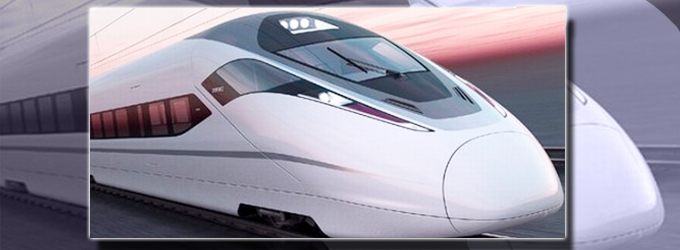Talks of building India’s first high speed rail line have gained momentum recently with the BJP-led NDA government coming to power. BJP, in its election manifesto, has promised to build a ‘Diamond Quadrilateral’, connecting the four metros and other leading cities of India through a high-speed rail network. The ambitious project is modelled on the Golden Quadrilateral national highways programme. While Golden Quadrilateral is an accomplished dream, we have to wait to see when the Diamond Quadrilateral project is going to be rolled out.

The concept of high speed rail networks is gaining attention the world over with developing countries in Asia, South America and even Africa, encompassing the bullet train project as part of their infrastructure development plans. In India, ASSOCHAM has already given the new railways minister a mega plan comprising seven corridor high speed freight network for transporting goods back and forth from manufacturing to consumption centres and from all major ports within a specified time frame of 36 hours.
A high-speed rail line is capable of supporting a speed of 200 km/h or more. Currently, the fastest train on the Indian Railways network is Bhopal-Shatabdi Express, which runs at an average speed of 90 kmph and touches about 140 kmph on the Delhi-Agra route. The average speed of Shatabdi trains is around 55-60 kmph, and of Rajdhani, 60-70 kmph. For express trains the average speed is below 50 kmph. To jump from this to high speed rails or bullet trains is a mammoth task.
The cost of building a high speed rail line is estimated at Rs 200 crore per km. It means that India will need Rs 12 lakh crore to build 6,000 km of high speed rail corridors connecting its four metros– Delhi, Mumbai, Kolkata and Chennai and other major cities.For Indian Railways to arrange such huge funds will be a herculean task. According to the interim railway budget, the annual outlay for the fiscal 2014-15 was Rs 64,305 crore.
Considering the cost constraints, the railway ministry is pushing the pedal to implement semi-high speed rail service by March 2015. Following in the footsteps of France and Germany, India is currently focusing on upgrading the current tracks to achieve 160-200 km speed before venturing into high-speed rail transport. Three semi-high speed routes, Delhi-Chandigarh, Delhi-Agra and Delhi-Bhopal are expected to become operational by the end of this year or early next year. But the big question is: will this low-cost experiment eventually lead to India’s first bullet train in the near future?
A high speed train project is not only capital-intensive but also has a very long gestation period. These two factors are expected to keep private players away from these projects. In countries like China, Japan and France, such projects are basically funded by the government. Bilateral engagements like soft loans from Japan or the World Bank may help in turning this project into a reality in India.
While some analysts believe that allowing FDI in Railway projects might encourage foreign investors to invest in Indian railway infrastructure projects, such large scale projects will certainly face land acquisition and environmental issues.
As a first step towards realizing the high speed railway dream, the Union government set up High Speed Rail Corporation (HSRC) in 2012 as a subsidiary of Rail Vikas Nigam. HSRC was incorporated to speed up the process of building India's first high speed rail network between Mumbai and Ahmedabad before venturing into other corridors like Howrah-Haldia, New Delhi-Patna and Hyderabad-Chennai. Now, with India's new prime minister, Narendra Modi reportedly giving the go-ahead to develop the 545 km Mumbai - Ahmedabad line, the project is back in the spotlight.
Currently, two studies are underway for the proposed Mumbai-Ahmedabad high speed corridor. JICA is preparing a 18-month detailed study report which will cover alignment, stations, cost of the project and funding options and is scheduled to be submitted by June 2015. The second study is being conducted by the SNCF (French National Railway) on traffic, on the route, and the project cost is likely to be finalised this year.
If India manages to set up high speed railway services between the four metros, it would certainly be a great feat. However, projects of such scale can be successfully implemented only with sustained support from the government.
|